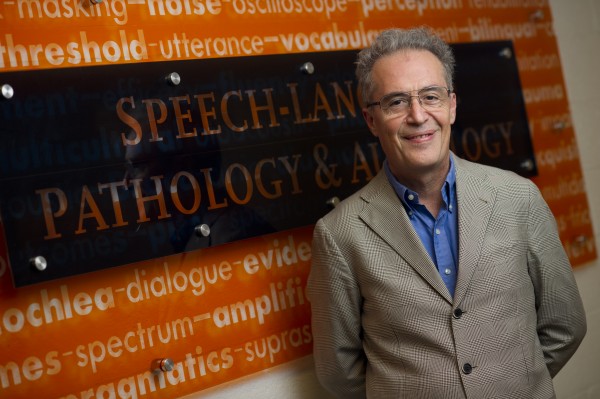A closer look at understanding human vision

How do we know it’s safe to step on shadows? And how can we get robots to understand the concept of shadows, visual stimulations in simple patterns of light and darkness?
Ennio Mingolla, the new chair of the Department of Speech Language Pathology and Audiology, explores questions like these in developing mathematical algorithms to model the neural processes of human vision.
“How combinations of pigments , surface shapes, and illumination result in what we see remains a fairly baffling and fundamental problem,” Mingolla said.
In the past several years, Mingolla has focused on modeling vision for the purposes of steering robotic vehicles. Understanding how humans process visual information, he said, can enable the development of better robotic systems that can reliably navigate the environment.
With his new appointment in the Bouvé College of Health Sciences, Mingolla is eager to extend his interests to the developmental aspects of human vision.
In collaboration with researchers from Pennsylvania State University and New York University, for example, Mingolla is exploring how the visual patterns we’re exposed to as infants affect the development of the visual system.
“We can study how the exposure to different patterns shapes the growing child’s awareness of their environment,” Mingolla said.
His team maps those patterns to computational models and then uses the models to answer questions in developmental psychology. These questions include how infants are able to learn to track moving objects with their eyes or search for objects of interest in their world.
All of these applications — from developmental psychology to robotic vehicles — require an understanding of the complex neural networks at play in the vision system. We know that vision, for example, is intimately connected to the other senses, but how remains a mystery.
“When you hear something that is louder in your left ear, you may make an eye movement to your left,” Mingolla said. These kinds of observations, he said, make it clear that the senses are linked in the brain, but the problem is that we don’t as yet fully understand the intricacies.
Luckily we don’t need to understand them in order to function; when we walk up to a shadow we don’t need to worry if it will harm us. If we did, life might be significantly less efficient. But understanding the human visual system could enable better health interventions and new technologies, said Mingolla, who is eager to bring his computational expertise to clinical investigations.




